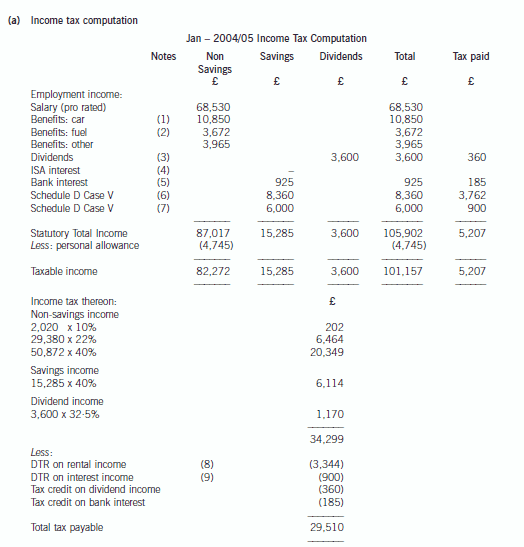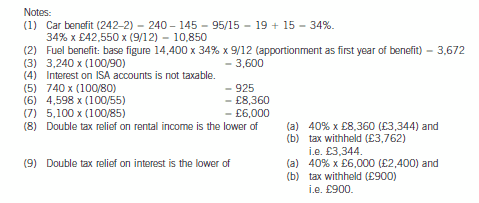请知悉!2020年福建ACCA考试成绩查询有关通知
发布时间:2020-10-19
好消息,好消息!2020年9月ACCA考试成绩查询入口已经开通了,大家赶紧查询成绩吧,还未了解查询详细流程的小伙伴先来看看本文内容吧。
2020年9月ACCA考试成绩已公布,考生现在登录ACCA官网即可查询。
ACCA考试成绩查询方式一共有三种,分别是:手机短信通知、邮件通知、在线查询。
(一)手机短信通知
(二)邮件通知
ACCA官方会根据所有考生的预留手机号和注册邮箱地址,通过短信和电子邮件的形式将成绩单发送给各位考生。不过,要实现这一功能,需要学员自行登录My ACCA账户中,设置邮件或短信通知成绩这一选项。
(三)在线查询
1. 进入ACCA官网http://www.accaglobal.com/hk/en.html 点击右上角My
ACCA进行登录;
2. 输入账号、密码登录后进入主页面,点击Exam
status & Results;
3. 跳转页面后选择View your
status report。
ACCA成绩查询结果显示:
到ACCA全球官方网站http://www.accaglobal.com/hk/en.html;点击Myacca登陆,点左面框架里的“EXAMS”进入页面,中间有一段:
EXAM STATUS REPORT Your status report
provides details of the ACCA exams you have already passed and those you have
still to complete EXAM STATUS REPORT Your status report provides details of the
ACCA exams you have already passed and those you have still to complete View
your status report——这个是超级链接,点击进入就可以查看学员全部的考试分数记录。
9月ACCA考试成绩常见问题:
1、ACCA成绩有效期
ACCA 应用知识和技能课程阶段的成绩永久有效,但战略阶段课程成绩仅7年内有效。即:从学员通过战略阶段的第一门科目开始,7年内需完成战略阶段所要求的所有科目,否则从第8年开始第1年所考过的战略阶段科目成绩将会被视为过期作废。
此政策实行滚动式废除,也就是说不会在第8年时把之前7年所有考过的P阶段科目成绩都废除,只会废除第1年考过的战略阶段科目成绩,第9年会废除前2年所通过的战略阶段科目成绩,以此类推。
2、何时申请成绩复议,具体步骤
学员须在考试成绩发布日后的15个工作日内提出复议申请,具体申请的步骤为:
(1):登录进入Myacca;
(2):点击“Exam Status and
Results”里面有“Administrative Review”;
(3):填写和提交表格即可。
一旦成绩有误,那么学员会在下次报考截止日期前收到改正后的考试成绩。
说明:因考试政策、内容不断变化与调整,51题库考试学习网提供的考试信息仅供参考,如有异议,请考生以权威部门公布的内容为准!
以上就是今天51题库考试学习网分享的全部内容,各位小伙伴可以开始查询成绩了,是不是很激动,千万记得如对成绩结果有疑问及时申请复议。如需了解更多ACCA考试的相关内容,记得关注51题库考试学习网!
下面小编为大家准备了 ACCA考试 的相关考题,供大家学习参考。
2 Assume that today’s date is 1 July 2005.
Jan is aged 45 and single. He is of Danish domicile but has been working in the United Kingdom since 1 May 2004
and intends to remain in the UK for the medium to long term. Although Jan worked briefly in the UK in 1986, he
has forgotten how UK taxation works and needs some assistance before preparing his UK income tax return.
Jan’s salary from 1 May 2004 was £74,760 per annum. Jan also has a company car – a Jaguar XJ8 with a list price
of £42,550 including extras, and CO2 emissions of 242g/km. The car was available to him from 1 July 2004. Free
petrol is provided by the company. Jan has other taxable benefits amounting to £3,965.
Jan’s other 2004/05 income comprises:
£
Dividend income from UK companies (cash received) 3,240
Interest received on an ISA account 230
Interest received on a UK bank account 740
Interest remitted from an offshore account (net of 15% withholding tax) 5,100
Income remitted from a villa in Portugal (net of 45% withholding tax) 4,598
The total interest arising on the offshore account was £9,000 (gross). In addition, Jan has not remitted other
Portuguese rental income arising in the year, totalling a further £1,500 (gross).
Jan informs you that his employer is thinking of providing him with rented accommodation while he looks for a house
to buy. The accommodation would be a two bedroom flat, valued at £155,000 with an annual value of £6,000. It
would be made available from 6 August 2005. The company will pay the rent of £600 per month for the first six
months. All other bills will be paid by Jan.
Jan also informs you that he has 25,000 ordinary shares in Gilet Ltd (‘Gilet’), an unquoted UK trading company. He
has held these shares since August 1986 when he bought 2,500 shares at £4.07 per share. In January 1994, a
bonus issue gave each shareholder nine shares for each ordinary share held. In the last week all Gilet’s shareholders
have received an offer from Jumper plc (‘Jumper’) who wishes to acquire the shares. Jumper has offered the following:
– 3 shares in Jumper (currently trading at £3.55 per share) for every 5 shares in Gilet, and
– 25p cash per share
Required:
(a) Calculate Jan’s 2004/05 income tax (IT) payable. (11 marks)


(b) Discuss the relative costs to the preparer and benefits to the users of financial statements of increased
disclosure of information in financial statements. (14 marks)
Quality of discussion and reasoning. (2 marks)
(b) Increased information disclosure benefits users by reducing the likelihood that they will misallocate their capital. This is
obviously a direct benefit to individual users of corporate reports. The disclosure reduces the risk of misallocation of capital
by enabling users to improve their assessments of a company’s prospects. This creates three important results.
(i) Users use information disclosed to increase their investment returns and by definition support the most profitable
companies which are likely to be those that contribute most to economic growth. Thus, an important benefit of
information disclosure is that it improves the effectiveness of the investment process.
(ii) The second result lies in the effect on the liquidity of the capital markets. A more liquid market assists the effective
allocation of capital by allowing users to reallocate their capital quickly. The degree of information asymmetry between
the buyer and seller and the degree of uncertainty of the buyer and the seller will affect the liquidity of the market as
lower asymmetry and less uncertainty will increase the number of transactions and make the market more liquid.
Disclosure will affect uncertainty and information asymmetry.
(iii) Information disclosure helps users understand the risk of a prospective investment. Without any information, the user
has no way of assessing a company’s prospects. Information disclosure helps investors predict a company’s prospects.
Getting a better understanding of the true risk could lower the price of capital for the company. It is difficult to prove
however that the average cost of capital is lowered by information disclosure, even though it is logically and practically
impossible to assess a company’s risk without relevant information. Lower capital costs promote investment, which can
stimulate productivity and economic growth.
However although increased information can benefit users, there are problems of understandability and information overload.
Information disclosure provides a degree of protection to users. The benefit is fairness to users and is part of corporate
accountability to society as a whole.
The main costs to the preparer of financial statements are as follows:
(i) the cost of developing and disseminating information,
(ii) the cost of possible litigation attributable to information disclosure,
(iii) the cost of competitive disadvantage attributable to disclosure.
The costs of developing and disseminating the information include those of gathering, creating and auditing the information.
Additional costs to the preparers include training costs, changes to systems (for example on moving to IFRS), and the more
complex and the greater the information provided, the more it will cost the company.
Although litigation costs are known to arise from information disclosure, it does not follow that all information disclosure leads
to litigation costs. Cases can arise from insufficient disclosure and misleading disclosure. Only the latter is normally prompted
by the presentation of information disclosure. Fuller disclosure could lead to lower costs of litigation as the stock market would
have more realistic expectations of the company’s prospects and the discrepancy between the valuation implicit in the market
price and the valuation based on a company’s financial statements would be lower. However, litigation costs do not
necessarily increase with the extent of the disclosure. Increased disclosure could reduce litigation costs.
Disclosure could weaken a company’s ability to generate future cash flows by aiding its competitors. The effect of disclosure
on competitiveness involves benefits as well as costs. Competitive disadvantage could be created if disclosure is made relating
to strategies, plans, (for example, planned product development, new market targeting) or information about operations (for
example, production-cost figures). There is a significant difference between the purpose of disclosure to users and
competitors. The purpose of disclosure to users is to help them to estimate the amount, timing, and certainty of future cash
flows. Competitors are not trying to predict a company’s future cash flows, and information of use in that context is not
necessarily of use in obtaining competitive advantage. Overlap between information designed to meet users’ needs and
information designed to further the purposes of a competitor is often coincidental. Every company that could suffer competitive
disadvantage from disclosure could gain competitive advantage from comparable disclosure by competitors. Published figures
are often aggregated with little use to competitors.
Companies bargain with suppliers and with customers, and information disclosure could give those parties an advantage in
negotiations. In such cases, the advantage would be a cost for the disclosing entity. However, the cost would be offset
whenever information disclosure was presented by both parties, each would receive an advantage and a disadvantage.
There are other criteria to consider such as whether the information to be disclosed is about the company. This is both a
benefit and a cost criterion. Users of corporate reports need company-specific data, and it is typically more costly to obtain
and present information about matters external to the company. Additionally, consideration must be given as to whether the
company is the best source for the information. It could be inefficient for a company to obtain or develop data that other, more
expert parties could develop and present or do develop at present.
There are many benefits to information disclosure and users have unmet information needs. It cannot be known with any
certainty what the optimal disclosure level is for companies. Some companies through voluntary disclosure may have
achieved their optimal level. There are no quantitative measures of how levels of disclosure stand with respect to optimal
levels. Standard setters have to make such estimates as best they can, guided by prudence, and by what evidence of benefits
and costs they can obtain.
(c) Comment on the matters to be considered in seeking to determine the extent of Indigo Co’s financial loss
resulting from the alleged fraud. (6 marks)
(c) Extent of alleged fraud – Matters to be considered
■ Details reported to police: The managing director may have made some estimate of the possible extent of the fraud in
reporting the chief accountant’s disappearance to the police.
■ The minimum loss (assuming no insurance) would be sales for the three days before he left. If not known (e.g. because
the only record of them was in the cash book) a simple estimate might be 3/20 × total recorded revenue for a typical
month.
■ The pattern of cash bankings extracted from bank statements: A falling trend starting during the year might mark the
time from which the chief accountant began to misappropriate cash.
■ Whether other managers have voiced their suspicions, if any, on the chief accountant’s behaviour. For example, if there
was any marked change in his lifestyle. (what he appeared to spend his money on, the hours he worked, etc).
■ The prior year auditor’s report was unmodified. If this was appropriate the chief accountant’s alleged fraudulent activities
may have only started in the current year.
■ The amount of fidelity insurance cover (i.e. against employees handling cash) that Indigo has taken out to meet any
claim for fraud.
■ The likelihood, if any, of recovering misappropriated amounts. For example, if the chief accountant has assets (e.g. a
house) that can be used to settle Indigo’s claims against him in the event that he is caught/successfully prosecuted.
声明:本文内容由互联网用户自发贡献自行上传,本网站不拥有所有权,未作人工编辑处理,也不承担相关法律责任。如果您发现有涉嫌版权的内容,欢迎发送邮件至:contact@51tk.com 进行举报,并提供相关证据,工作人员会在5个工作日内联系你,一经查实,本站将立刻删除涉嫌侵权内容。
- 2020-05-20
- 2021-05-22
- 2019-01-05
- 2020-10-19
- 2020-08-12
- 2020-01-10
- 2019-01-05
- 2020-10-19
- 2019-01-05
- 2019-03-20
- 2019-01-05
- 2019-03-20
- 2020-01-10
- 2020-01-10
- 2020-08-12
- 2019-03-20
- 2021-04-07
- 2020-08-12
- 2019-03-20
- 2019-01-05
- 2020-10-18
- 2021-01-07
- 2021-01-21
- 2021-04-07
- 2020-10-19
- 2021-01-06
- 2020-09-05
- 2021-04-08
- 2019-03-20
- 2021-01-06